Before It Had a Name
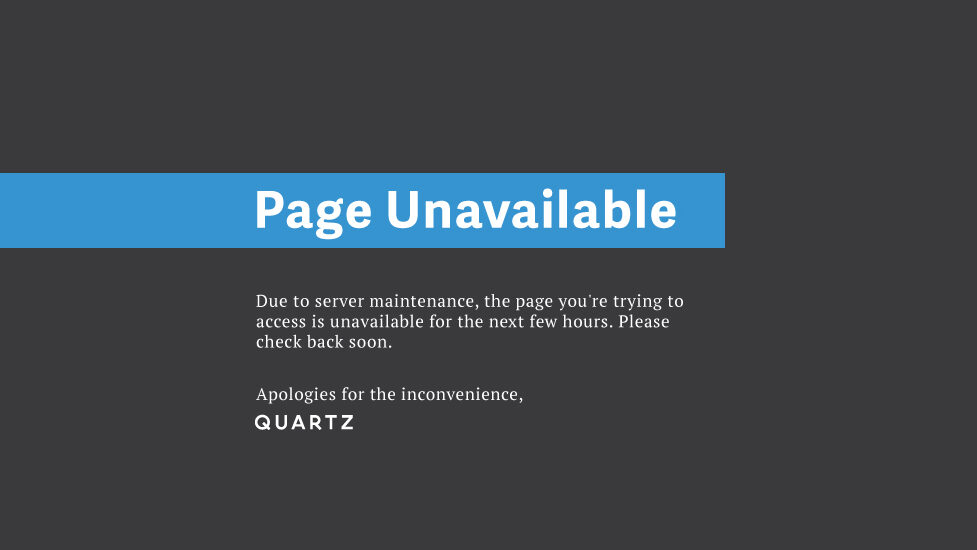
Looking back at the beginning of Quartz
In early 2012, I was living in Seattle. I’d left The New York Times less than a year earlier after a long stint but I was missing media. I was on a quick trip back to NYC for an interview. That trip turned out to be a turning point for me – but not for the reason I expected. I saw a tweet from Zach Seward, who had just left The Wall Street Journal to join a then-unnamed new business venture with Atlantic Media. I assumed he was headed to DC, but I reached out anyway. I think it was the next morning, I was having breakfast with Kevin Delaney.
Things moved fast. That meeting turned into an invitation to help build something from the ground up, a new kind of business publication, digital-native, globally minded, and unburdened by legacy infrastructure or assumptions. It didn’t have a name yet, but it had a mission. I said yes.
Rethinking the Experience of News
Quartz officially launched on September 24, 2012, but our work started long before that. From the beginning, we were aligned in our ambition: don’t just build another news site, build something that reimagines how digital journalism could work.
That meant rethinking everything:
- The homepage wasn’t a priority; the article was the product.
- Navigation could be minimal. Scrolling would guide the reader.
- The design would be fully responsive, mobile-first, and tap-friendly.
- Native advertising wouldn’t be an afterthought or compromise—it would be designed with the same care and integrity as editorial.
- Everything would be built around an API that powered the site, the newsletter, and—aspirationally—future products to come.
Many of these ideas weren’t easy sells. I remember Justin Smith, then president of Atlantic Media, raising valid concerns about some of the more unconventional product decisions we were proposing. He wasn’t wrong to, this was a gamble. To his credit, he trusted us to take the risk. I think he really just trusted Kevin and that was enough. That kind of institutional backing—especially for something so different—was rare. And it made all the difference.
This was my first major product leadership role. I was used to being the person with too many ideas and not enough organizational patience to try them. At Quartz, that changed. Kevin and Zach gave me real space to explore. We shared a mindset: this was our chance to do what we hadn’t been able to do elsewhere.
I sketched out early prototypes. We thought deeply about performance, caching, and localStorage long before “speed” became a talking point in media tech. At this point the “we” was a team; Sara Lerner, Josh Kadis, and Sam Williams were the real core of the “Product Team”.
From sketches to stream
Some early Quartz scenes, rough wireframes, design printouts – there were many faces behind it all in the early days.

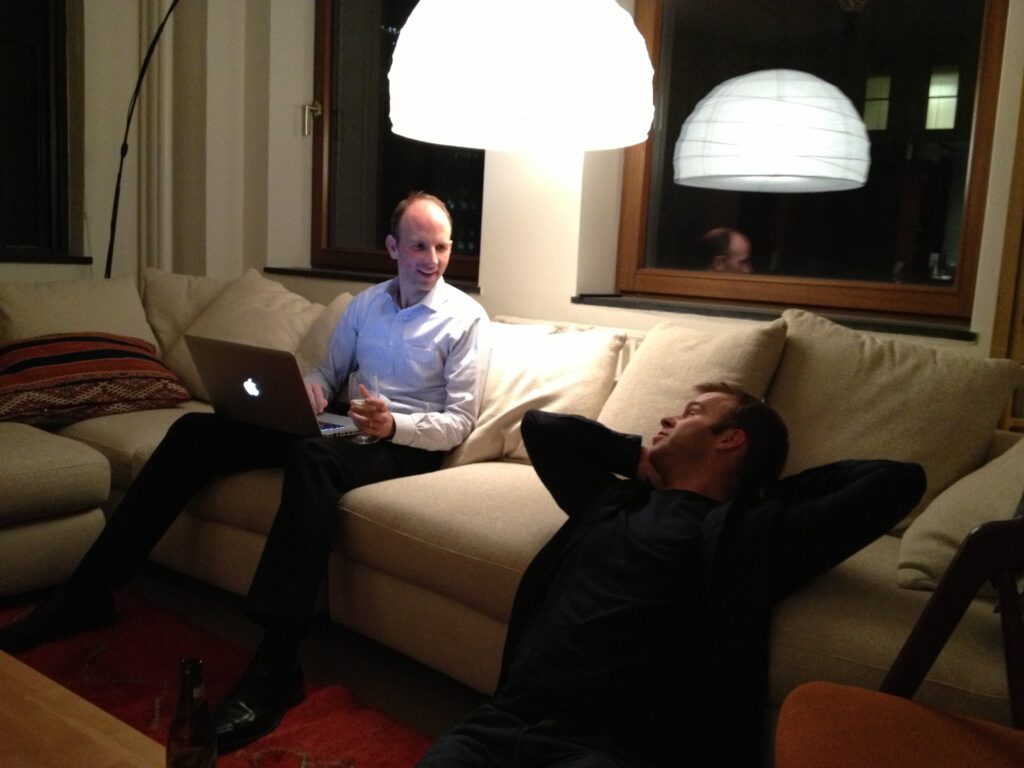
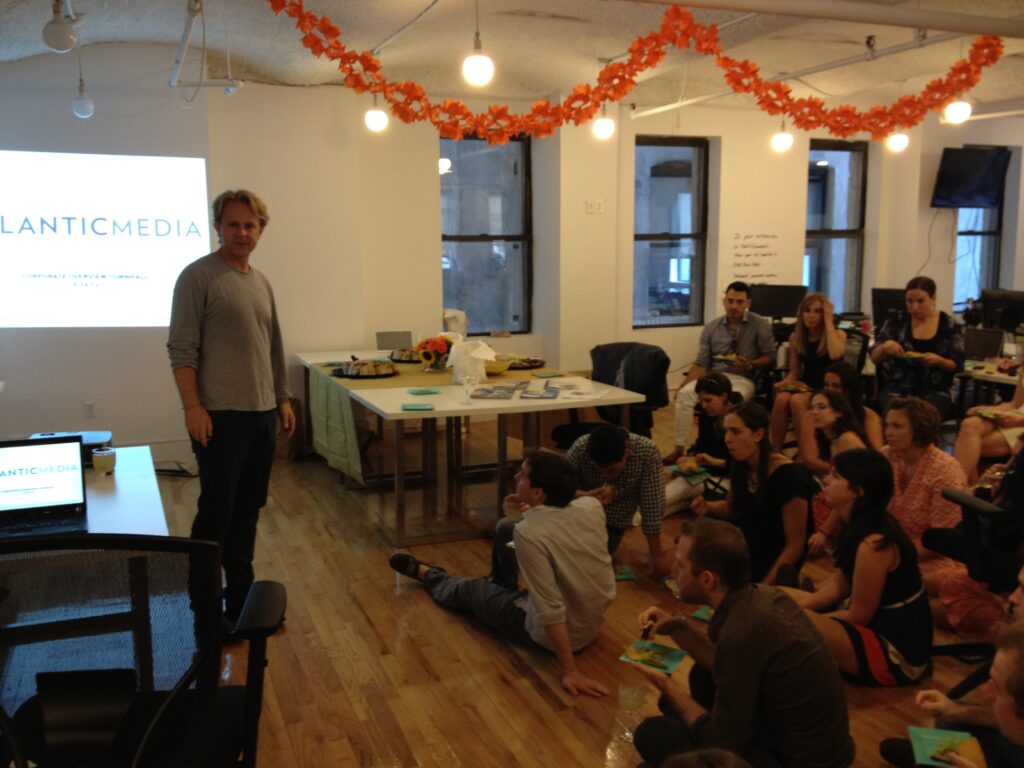

We built the site on WordPress VIP but didn’t use it like a traditional CMS—we published JSON, not pages (mostly). Articles were loaded and pre-cached to feel lightning fast. In some cases, we kept things honest and triggered Page Views only when the next article had been in view for 2–3 seconds, to avoid accidental scrolls being counted.
There was no app at launch – Quartz ran entirely on the web, a deliberate move that was ahead of its time. As Peter Kafka noted at the time in AllThingsD, this wasn’t just a design choice—it was a philosophical one. We wanted Quartz to feel app-like, but without the siloed friction of app ecosystems.
The Launch
Launch day was exactly the kind of chaos you’d expect from a lean team trying to punch above its weight. We were exhausted. A last-minute issue meant a frantic reworking of code. Josh and Sam were taking shifts trying to get the site stable. Sara was being level-headed and everyone was incredibly patient.
People who made it happen
A few photos from the early days—launch-week exhaustion, whiteboard scribbles, and the SoHo office.
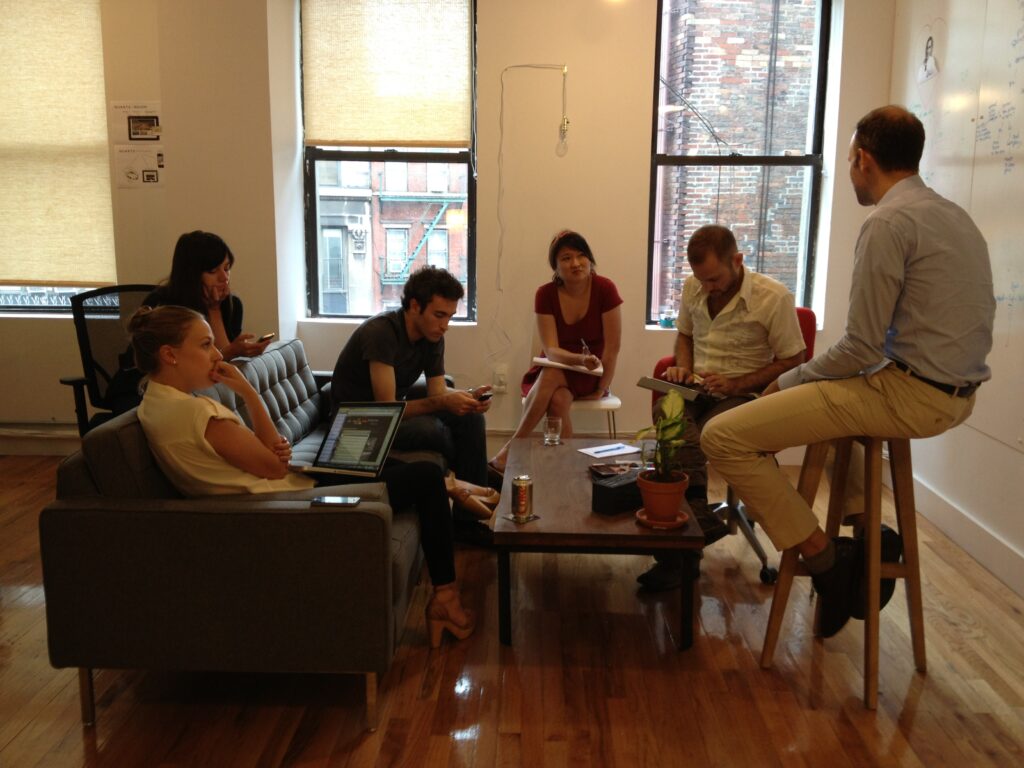

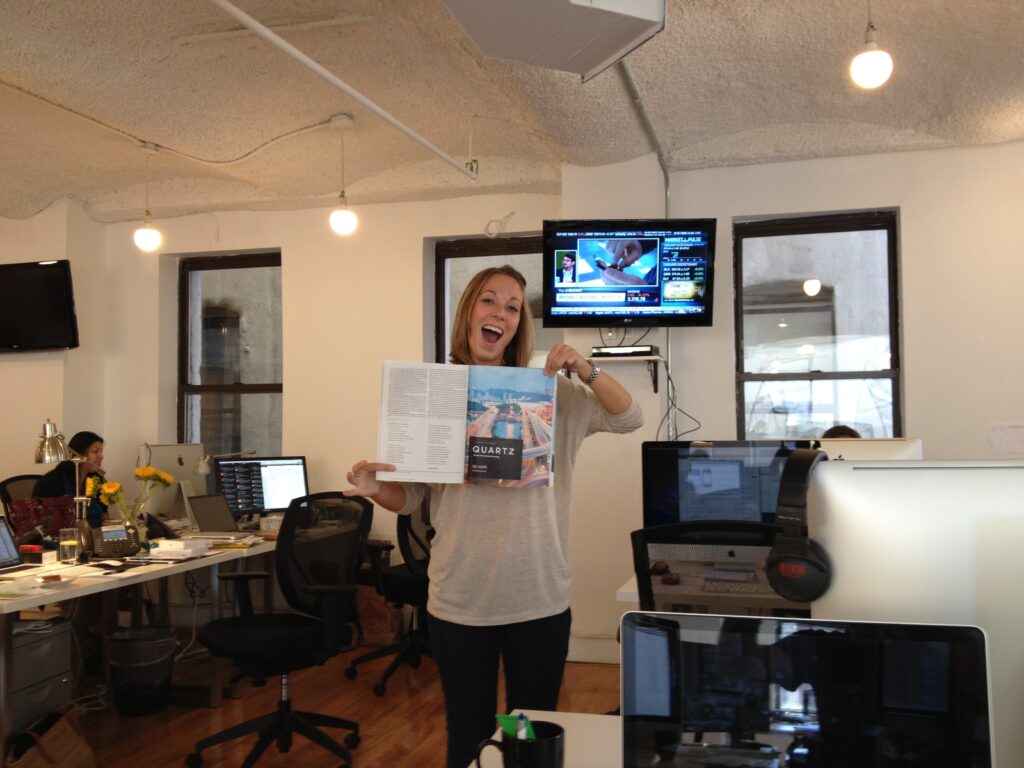
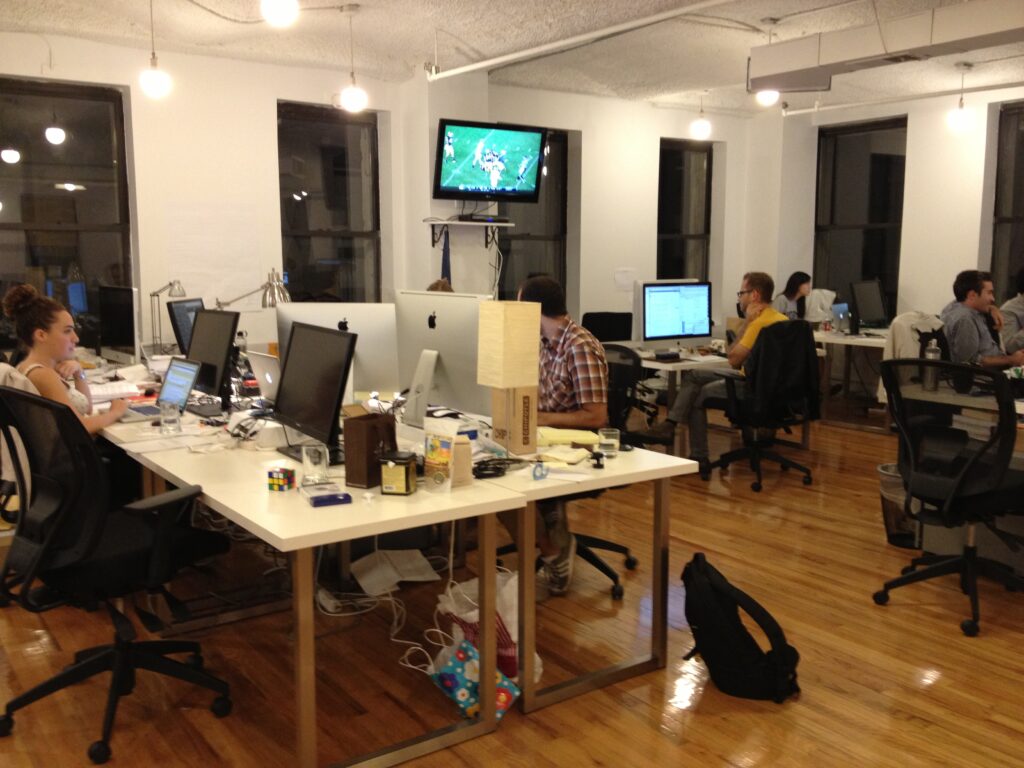
But it worked. Quartz was live.
Coverage of the launch captured what we were aiming for:
- Nieman Lab called us “a technological and structural innovator,” praising our app-like design, scrolling stream, and view-agnostic story organization.
- AllThingsD noted that our rejection of native apps put us in the “leading edge of digital publishing”.
- Kevin’s welcome letter declared: “Quartz is intended to embody the era in which we’re creating it, like Wired in the 1990s, Rolling Stone in the 1960s, Fortune in the 1930s, and The Economist in the 1840s”. (ok, that was our coverage)
That was ambitious—but it didn’t feel like a stretch.
After I Left
I stayed until early 2014. My code, like all code, didn’t last. It was rewritten, rethought, restructured by people who came after. That’s how it should be. But the values—the design intent, the reader-first thinking, the clarity of purpose—persisted.
As Zach wrote recently in What Was Quartz:
“From a spare SoHo loft, and then increasingly fancier offices, we set out to be compelling, entertaining, serious, and excellent all at the same time. Everything was up for reinvention, from the structure of our stories to the design of our ads to the need for a traditional homepage.”
I’m proud to have been part of that reinvention. Even as Quartz changed hands-Uzabase, independence, G/O Media-it retained an identity that felt unusually intact. That’s because of the people. Good people kept it going. That was something you could see-and prove-in the alumni Slack.
Now, with its sale and dissolution, Quartz is truly over. The code is gone, sure, but the the staff is gone and the mission discarded. As someone who was there at the beginning—before there was a name, before there was a site—that hits hard.
What Remains
In 2017, I wrote a post called The Idea of Quartz, a kind of notebook-dump of how we built it, what we tried, and what I hoped it stood for. At the time, I thought we were still just getting started. Today, it reads more like an obituary.
Still, I don’t regret any of it. What we made was bold. And for a while, it worked.
Quartz was a foundational chapter in my path. Thank you to everyone who made it what it was.
It was the first thing I helped build from scratch. I’ll never forget it.
Zach Seward wrote a post today that inspired me to finally write this. If you care about digital media, product thinking, or Quartz itself. You should read it.